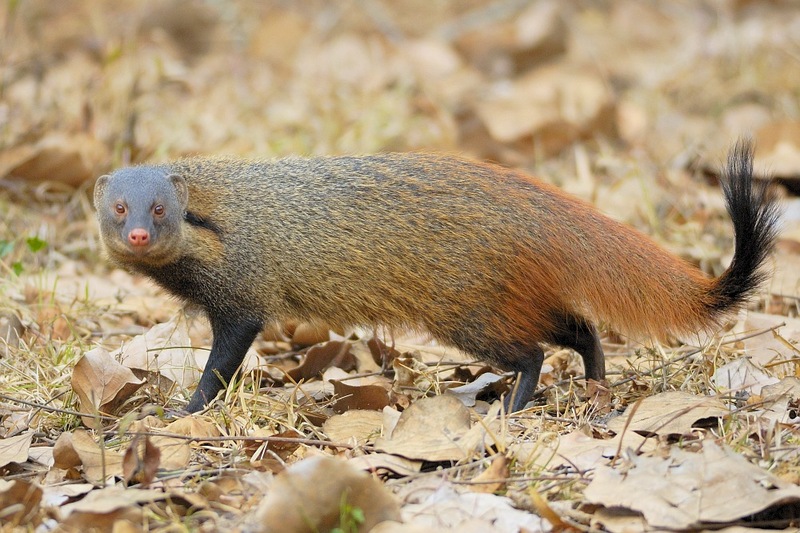|
| Query: reptile | Result: 1669th of 2585 | |
stripe-necked mongoose (Herpestes vitticollis)
| Subject: | stripe-necked mongoose (Herpestes vitticollis)
| | Poster: | Wiki Photos (---@---.---)
| |

| Resolution: 1000x666
File Size: 284540 Bytes
Date: 2007:01:27 17:24:57
Camera: NIKON D70 (NIKON CORPORATION)
F number: f/4.0
Exposure: 3125/1000000 sec
Focal Length: 300/1
Upload Date: 2017:02:02 13:03:54
|
Description
English: Adult stripe-necked mongoose, Herpestes vitticollis, photographed in Nagarhole National Park in Karnataka, India
Date 27 January 2007, 17:24:57
Author Yathin sk https://commons.wikimedia.org/wiki/User:Yathin_sk
Source: https://commons.wikimedia.org/wiki/File:2007-stripe-necked-mongoose.jpg
The stripe-necked mongoose (Herpestes vitticollis) is a species of mongoose found in southern India to Sri Lanka. The stripe-necked mongoose is the largest of the Asiatic mongooses. The range distribution of the Stripe-necked Mongoose was restricted to the southern part of India and Sri Lanka. The stripe-necked mongoose feeds on frogs, crabs, mouse deer, hares, rodents, fowl, and reptiles. This mongoose species is more diurnal in habits. They prefer forested areas near a fresh water source. They are often found in swamps and rice fields. Order: Carnivora, Family: Herpestidae, Species: Herpestes vitticollis Bennett, 1835.
|
Comments |
|---|
| | Guest |
|
Scientific Name: Herpestes vitticollis Bennett, 1835
Common Names: Stripe-necked Mongoose, Striped-necked Mongoose
Synonym(s): Urva vitticollis (Bennett, 1835)
Taxonomic Notes: Two subspecies are recognised, H. v. vitticollis and H. v. inornatus (Van Rompaey and Jayakumar 2003) but there has been no recent taxonomic revision. |
^o^
Animal Pictures Archive for smart phones
^o^
|
|
|

